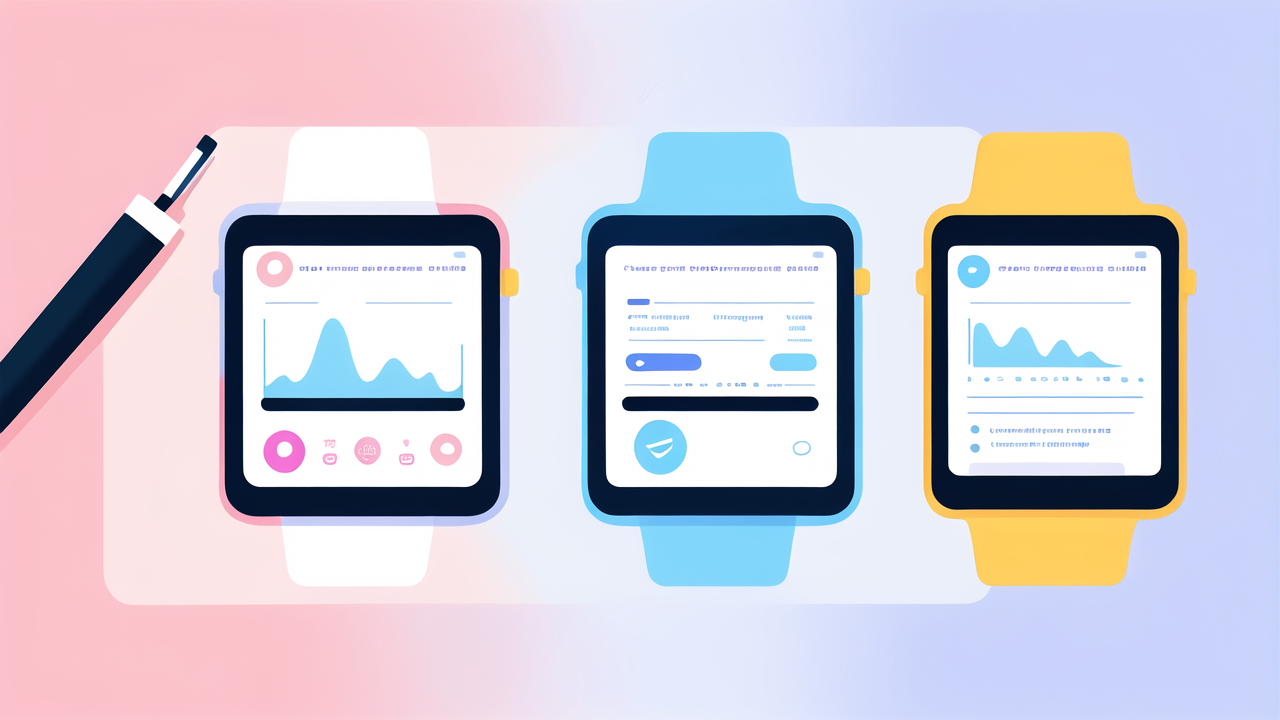Understanding the Health Capabilities of Smart Watches
What to Look for in a Health-Oriented Smart Watch
When choosing a health-oriented smart watch, consider key features. Look for accurate heart rate monitoring and sleep tracking. GPS is crucial for outdoor activities. Water resistance is important for swimmers. Some watches offer ECG capabilities for heart health. Blood oxygen monitoring is useful for overall wellness. Step counting and calorie tracking are standard features. Advanced watches may include stress monitoring and guided breathing exercises. Battery life is also important for continuous health tracking. Choose a watch with a user-friendly interface and compatible with your smartphone.

The Technology Behind Smart Watch Health Features
Smart watches use various sensors to track health data. Optical heart rate sensors use LED lights to measure blood flow. Accelerometers detect movement for step counting and sleep tracking. Gyroscopes help with more complex motion tracking. GPS chips provide location data for outdoor activities. Some watches use bioelectrical impedance for body composition analysis. Advanced models may include ECG sensors for heart rhythm monitoring. Pulse oximeters measure blood oxygen levels. These sensors work together with algorithms to provide health insights. The data is processed on the watch or synced to a smartphone app for analysis.
Top Smart Watches for Health and Wellness in the United States
Apple Watch Series 4 and Beyond: A Deep Dive
Apple Watch has been a leader in health-focused smartwatches since Series 4. It offers ECG capabilities, fall detection, and noise level monitoring. The always-on display shows health stats at a glance. Heart rate notifications alert users to irregularities. The watch tracks various workouts, from running to swimming. Sleep tracking provides insights into sleep quality and duration. The Breathe app guides users through mindfulness exercises. Apple Fitness+ integration offers on-demand workouts. The Health app consolidates data for a comprehensive health view. New models feature blood oxygen monitoring and improved sensors.

Samsung Galaxy Watch: The Competitive Edge
Samsung's Galaxy Watch series offers robust health features. It includes automatic workout detection for various activities. The watch provides real-time heart rate monitoring and stress tracking. Sleep analysis offers detailed insights into sleep patterns. Built-in GPS allows for accurate outdoor activity tracking. Water resistance makes it suitable for swimming. The watch can measure blood oxygen levels and track menstrual cycles. Samsung Health app integrates data for a holistic health view. Some models offer ECG capabilities in certain regions. The rotating bezel provides a unique way to navigate health features.
Fitbit Versus Garmin: Comparing the Best Health Smartwatches
Fitbit and Garmin offer specialized health smartwatches. Fitbit excels in sleep tracking and overall wellness monitoring. It provides detailed sleep stage analysis and a sleep score. Fitbit's stress management score helps users understand their stress levels. The Active Zone Minutes feature encourages optimal exercise intensity. Garmin focuses on advanced fitness tracking for athletes. It offers detailed running dynamics and recovery time recommendations. Both brands provide long battery life for continuous health tracking. Garmin's Body Battery feature helps users optimize their daily activities. Fitbit's SmartTrack automatically recognizes and records workouts. Both offer guided breathing exercises and women's health tracking.
Leveraging Smart Watches for Optimal Health Outcomes
How to Integrate Health Data from Your Smart Watch
To make the most of your smartwatch's health data, start by syncing it regularly. Most watches automatically sync with smartphone apps. Review your data daily to spot trends and patterns. Use the insights provided to set realistic health goals. Many apps offer personalized recommendations based on your data. Share relevant data with your healthcare provider for better care. Some watches allow integration with other health apps and devices. This creates a more comprehensive health picture. Use the data to track progress and adjust your habits. Remember that smartwatch data complements, not replaces, medical advice.

Tips for Achieving Health Goals with Smart Watch Technology
Set clear, measurable health goals that your smartwatch can track. Use the watch's reminders to stay active throughout the day. Take advantage of guided workout features for proper form and pacing. Use sleep tracking to improve your sleep habits and duration. Monitor your heart rate during workouts to maintain the right intensity. Participate in smartwatch challenges to stay motivated. Use stress tracking features to identify and manage stressful situations. Track your water intake if your watch offers this feature. Regularly review your progress and adjust goals as needed. Remember, consistency is key in achieving long-term health benefits.
Overcoming Common Challenges in Smart Watch Adoption
Many users struggle with consistent wear and charging. Establish a routine for charging, like during shower time. Some find the constant notifications overwhelming. Customize your settings to receive only essential health alerts. Data accuracy concerns can be addressed by ensuring proper fit. Wear the watch snugly but comfortably for best results. Privacy worries are common with health data. Familiarize yourself with the watch's privacy settings. Some users find health tracking obsessive. Set boundaries and focus on overall trends, not daily fluctuations. Technical issues can be frustrating. Keep your watch's software updated for best performance. Learning all features can be daunting. Start with basic functions and gradually explore more. Remember, the watch is a tool to support, not control, your health journey.




Leave a comment
This site is protected by hCaptcha and the hCaptcha Privacy Policy and Terms of Service apply.